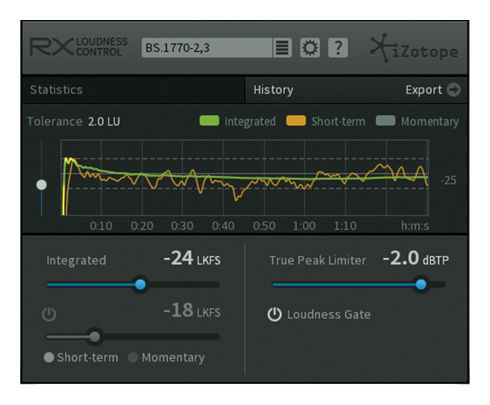


Avoiding clipping but have the interviewee clearly audible without a soft limiter that gracefully avoids transients from getting through will mean you'll be constantly fiddling with the faders to keep everything in check. Let's take an interview from a manufacturing site as an example. On these two, the soft limiter works great, but on some cheaper audio interfaces it may downgrade sound quality, so you should first try before turning it on. On A Sound Devices recorder such as the MixPre-6 I reviewed earlier or on an Apogee Duet iPad/Mac, you'll find a soft limiter. A rule of thumb is to set gain as high as possible without any clipping occurring and then dialling back a little to have some headroom. If your gain levels are too low, any sort of post-processing you apply will add artefacts that become more annoying as you turn up the volume. To create a good sounding audio file, you'll have to record at a high enough gain. What I'm going to discuss is how I optimise such recordings. Mixing is less of an issue when you're recording an interview or a commentary to go with a documentary, for example. That's not the audio post production I'm covering here as those also require careful mixing. You might also be preparing a soundtrack CD from multiple recordings. If you're recording a classical concert, you may have more than two mics set up to record audio from different parts of an orchestra. To be honest, my workflow will only work well with one or two microphones. The two apps I use for this are the iZotope RX 6 Advanced Audio Editor and the Ozone 8 mastering suite. If you are recording audio separately when shooting a documentary, interview or movie, chances are you'll not only have to synchronise it with the footage but also edit your audio to make it sound perfect in post production. Here are the most common audio management tools.Īll of our sample libraries come with a Royalty-free Single User License.Erik Vlietinck shares his secrets to good post production audio using Izotope's remarkable RX 6 and Ozone 8 plugins. Some digital audio workstations feature an included search tool that can also read embedded metadata. Metadata can be read and processed by audio management tools. To provide you with the fastest and easiest workflow possible, all files contain extensive metadata.
Izotope voice denoise full#
We carefully removed shell drops, trigger releases, and other small artifacts within the recordings but we left them as raw as possible so you have full control over what you want to hear and what you don’t want to hear. We have kept these sounds as raw and unprocessed as possible. Our Designed shots have been exported into Shot, Mech, and Tail layers so you can seamlessly integrate them into your next game or film. These assets were mixed to the highest level of authenticity by the field recordist/gun expert who shot each gun in the library. We have also included custom-designed assets for each gun within the Master Gun Collection. We’ve found this type of pitch manipulation to be awesome for designing slow-motion gunshots or even tank shots. Recording these samples at 192KHz gives you the ability to pitch these down by two octaves before you start losing any high-end information. If you are looking for a more natural-sounding weapon try using a compressor to just knock down the transient past the 0 threshold. If you are looking for more aggressive weapons, try aggressively pushing these samples into a clipper. Recording weapons at 32Bit Float allows you to take control of the dynamics in post. All of the microphones were recorded at 32bit float and delivered at 32bit float aside from the 150ft microphones captured at 24bit.


We used exclusively Sound Devices Recorders to capture all audio on location including the Sound Devices Mix Pre 6-II, Sound Devices Mix Pre 10-II, and the Sound Devices 633. For the distant microphones, we recorded 3 separate distances including 15ft, 50ft, and 150ft which is perfect for designing player, NPC, & distant perspectives. We have placed all of the microphones in such a way that you have the driest possible sound which is perfect for worldizing your weapons just by swapping the tails. Close microphones include 4 Muzzle Microphones placed both in front of and behind the muzzle, 2 Body Microphones aimed directly at the mech of the gun, & 2 POV Microphones that are placed behind the shooter’s shoulders. The BAR comes with 14 microphone options, 8 Close Microphones, and 3 Distant Stereo Pairs.


 0 kommentar(er)
0 kommentar(er)
